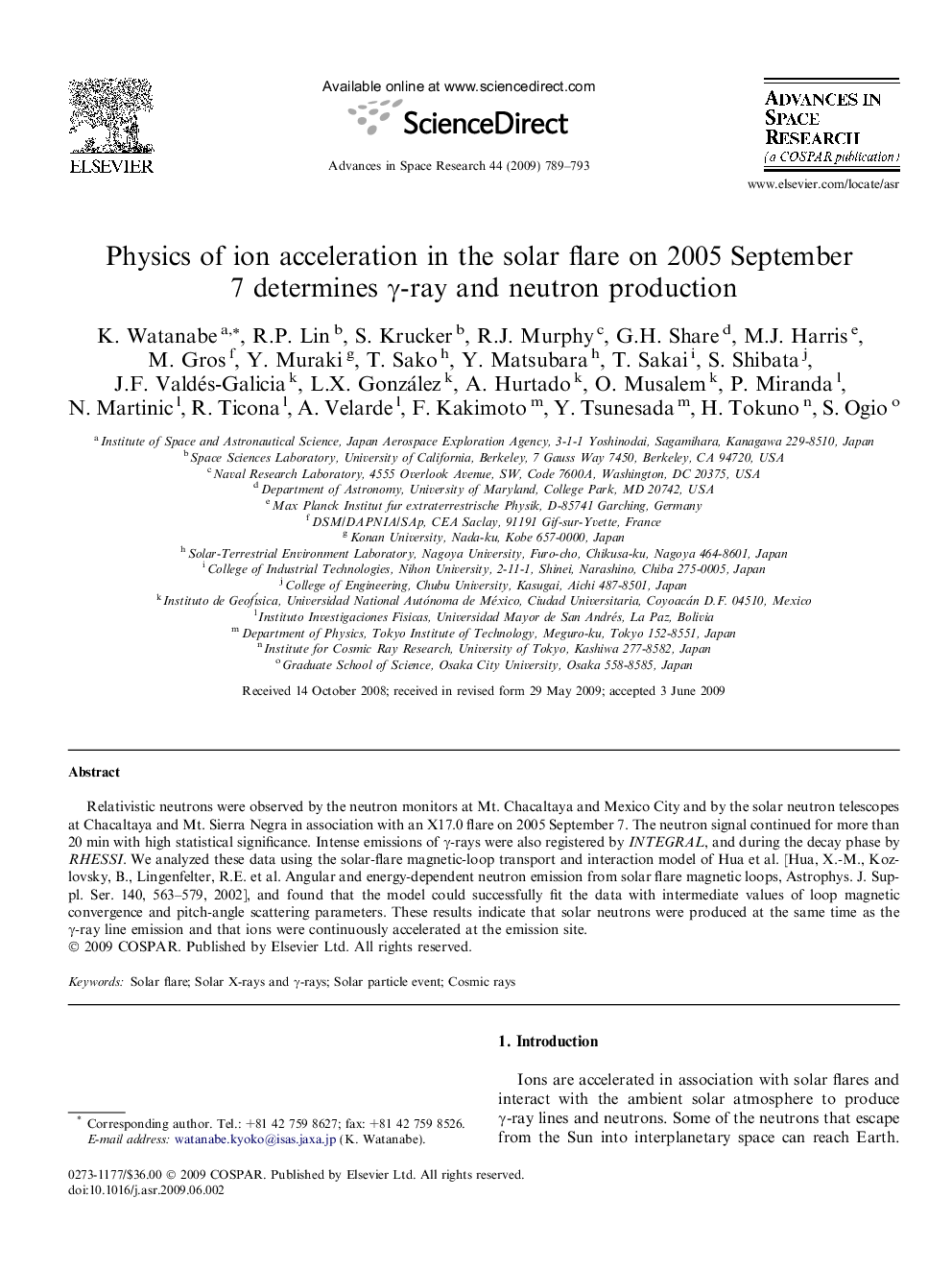| Article ID | Journal | Published Year | Pages | File Type |
|---|---|---|---|---|
| 1766110 | Advances in Space Research | 2009 | 5 Pages |
Relativistic neutrons were observed by the neutron monitors at Mt. Chacaltaya and Mexico City and by the solar neutron telescopes at Chacaltaya and Mt. Sierra Negra in association with an X17.0 flare on 2005 September 7. The neutron signal continued for more than 20 min with high statistical significance. Intense emissions of γγ-rays were also registered by INTEGRAL, and during the decay phase by RHESSI . We analyzed these data using the solar-flare magnetic-loop transport and interaction model of Hua et al. [Hua, X.-M., Kozlovsky, B., Lingenfelter, R.E. et al. Angular and energy-dependent neutron emission from solar flare magnetic loops, Astrophys. J. Suppl. Ser. 140, 563–579, 2002], and found that the model could successfully fit the data with intermediate values of loop magnetic convergence and pitch-angle scattering parameters. These results indicate that solar neutrons were produced at the same time as the γγ-ray line emission and that ions were continuously accelerated at the emission site.
